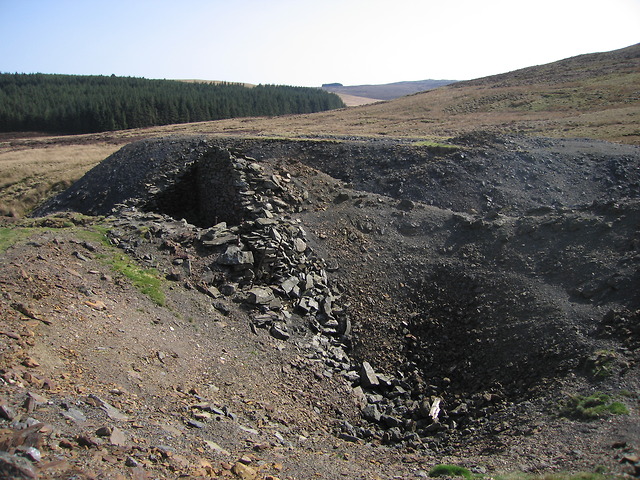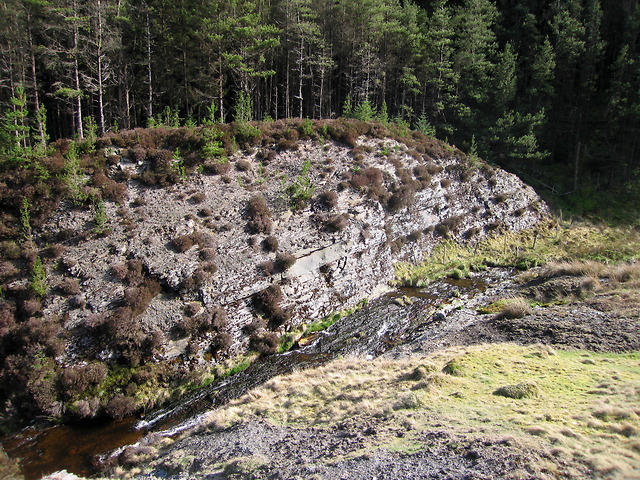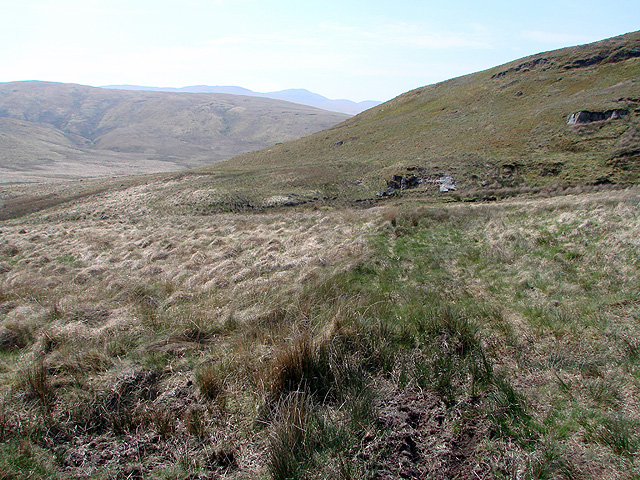Bugeilyn
Lake, Pool, Pond, Freshwater Marsh in Montgomeryshire
Wales
Bugeilyn

Bugeilyn, located in Montgomeryshire, Wales, is a picturesque freshwater lake nestled amidst the beautiful countryside. Spanning an area of approximately 60 acres, it is one of the largest natural lakes in the region. Bugeilyn is surrounded by rolling hills and lush green valleys, creating a serene and tranquil atmosphere.
The lake itself is renowned for its crystal-clear waters, reflecting the surrounding landscape like a mirror. It is fed by several small streams and springs, ensuring a constant supply of fresh water. The water in Bugeilyn remains cool throughout the year, making it an ideal habitat for various species of fish, including brown trout and perch.
Surrounding the lake, there is a diverse range of vegetation, including reeds, rushes, and water lilies. This lush flora provides essential habitats for a variety of bird species, such as ducks, swans, and herons. Additionally, the lake attracts an array of migratory birds during the winter months, adding to its biodiversity.
Bugeilyn offers ample opportunities for outdoor activities and nature enthusiasts. Fishing is a popular pastime here, with anglers drawn to the abundant fish population. The lake is also a great spot for birdwatching, with several designated observation points offering panoramic views.
Access to Bugeilyn is convenient, with nearby parking facilities and walking trails leading to the lake. The surrounding area is home to a few farms and cottages, maintaining the rural charm of the region.
Overall, Bugeilyn is a natural gem in Montgomeryshire, providing a haven for wildlife, a peaceful retreat for visitors, and a place of natural beauty for all to enjoy.
If you have any feedback on the listing, please let us know in the comments section below.
Bugeilyn Images
Images are sourced within 2km of 52.515102/-3.7369079 or Grid Reference SN8292. Thanks to Geograph Open Source API. All images are credited.





![Cyfartha lead mine - wheel pit This structure once housed a water wheel, driven by water taken from the Nant Ddu (and supplemented by a leat carrying water from the Nant Goch). The power generated here would have been transmitted mechanically to the engine house <a title="https://www.geograph.org.uk/photo/2373240" href="https://www.geograph.org.uk/photo/2373240">Link</a> next to the shaft <a title="https://www.geograph.org.uk/photo/2373243" href="https://www.geograph.org.uk/photo/2373243">Link</a> of the mine a short stretch upstream of the Nant Ddu. The function of the structure attached to the side of the wheel pit <a title="https://www.geograph.org.uk/photo/2373261" href="https://www.geograph.org.uk/photo/2373261">Link</a> is not entirely clear to me at present. It would seem reasonable that the crank driving the flatrod system to transmit power to the engine house would have been housed in it, but I cannot see an opening for the mechanism to emerge from. The wheel pit is listed on the Coflein[1] database <span class="nowrap"><a title="http://www.coflein.gov.uk/en/site/289528/details" rel="nofollow ugc noopener" href="http://www.coflein.gov.uk/en/site/289528/details">Link</a><img style="margin-left:2px;" alt="External link" title="External link - shift click to open in new window" src="https://s1.geograph.org.uk/img/external.png" width="10" height="10"/></span> .
Cyfartha mine is also known as Nantddu mine since most of its buildings are located in the valley of the Nant Ddu. Mine operations at Cyfartha lasted from 1842 to 1881. The ore was mined mostly for its lead and copper content. Cyfartha was an underground mine, with access to the levels through a number of shafts. Power was generated using two water wheels and a horse-powered whim. The water feeding the wheels came mainly from the Nant Ddu, supplemented by a long leat abstracting water from the Nant Goch about a kilometre to the north. Since the water wheels are located lower than the openings of the engine shafts, power was transmitted using a flatrod system, i.e. a series of linked iron rods moving backwards and forwards as the wheel turns (see Wikipedia article on Eylesbarrow mine in Devon <span class="nowrap"><a title="http://en.wikipedia.org/wiki/Eylesbarrow_mine#The_flatrod_system" rel="nofollow ugc noopener" href="http://en.wikipedia.org/wiki/Eylesbarrow_mine#The_flatrod_system">Link</a><img style="margin-left:2px;" alt="External link" title="External link - shift click to open in new window" src="https://s1.geograph.org.uk/img/external.png" width="10" height="10"/></span> for details of the mechanism). For a detailed description of the mine, see Clwyd-Powys Archaeological Trust <span class="nowrap"><a title="http://www.cpat.org.uk/projects/longer/mines/8497.htm" rel="nofollow ugc noopener" href="http://www.cpat.org.uk/projects/longer/mines/8497.htm">Link</a><img style="margin-left:2px;" alt="External link" title="External link - shift click to open in new window" src="https://s1.geograph.org.uk/img/external.png" width="10" height="10"/></span> . Cyfartha mine as whole is listed in the Coflein[1] database <span class="nowrap"><a title="http://www.coflein.gov.uk/en/site/306327/details" rel="nofollow ugc noopener" href="http://www.coflein.gov.uk/en/site/306327/details">Link</a><img style="margin-left:2px;" alt="External link" title="External link - shift click to open in new window" src="https://s1.geograph.org.uk/img/external.png" width="10" height="10"/></span> .](https://s3.geograph.org.uk/geophotos/02/37/32/2373259_813d3492.jpg)








Bugeilyn is located at Grid Ref: SN8292 (Lat: 52.515102, Lng: -3.7369079)
Unitary Authority: Powys
Police Authority: Dyfed Powys
What 3 Words
///swim.commands.agency. Near Staylittle, Powys
Nearby Locations
Related Wikis
Banc Bugeilyn
Banc Bugeilyn is a hill found in Plynlimon between Aberystwyth and Welshpool in the United Kingdom; grid reference SN826925.The summit is class as a Dewey...
Bryn yr Ŵyn
Bryn yr Ŵyn (Welsh for 'hill of the lambs') is a former Dewey in the foothills of Plynlimon between Aberystwyth and Welshpool in Wales. The summit height...
Siambr Trawsfynydd
Siambr Trawsfynydd is a mountain in Ceredigion, Wales, located to the north of Pumlumon. It is 582 m (1,910 ft) above sea level and one of the higher summits...
Clipyn Du
Clipyn Du is a mountain in northern Powys in Wales. Also known as Tarren Bwlch-Gwyn or Siambwr Trawsfynydd, it is one of the higher summits of the area...
Nearby Amenities
Located within 500m of 52.515102,-3.7369079Have you been to Bugeilyn?
Leave your review of Bugeilyn below (or comments, questions and feedback).




